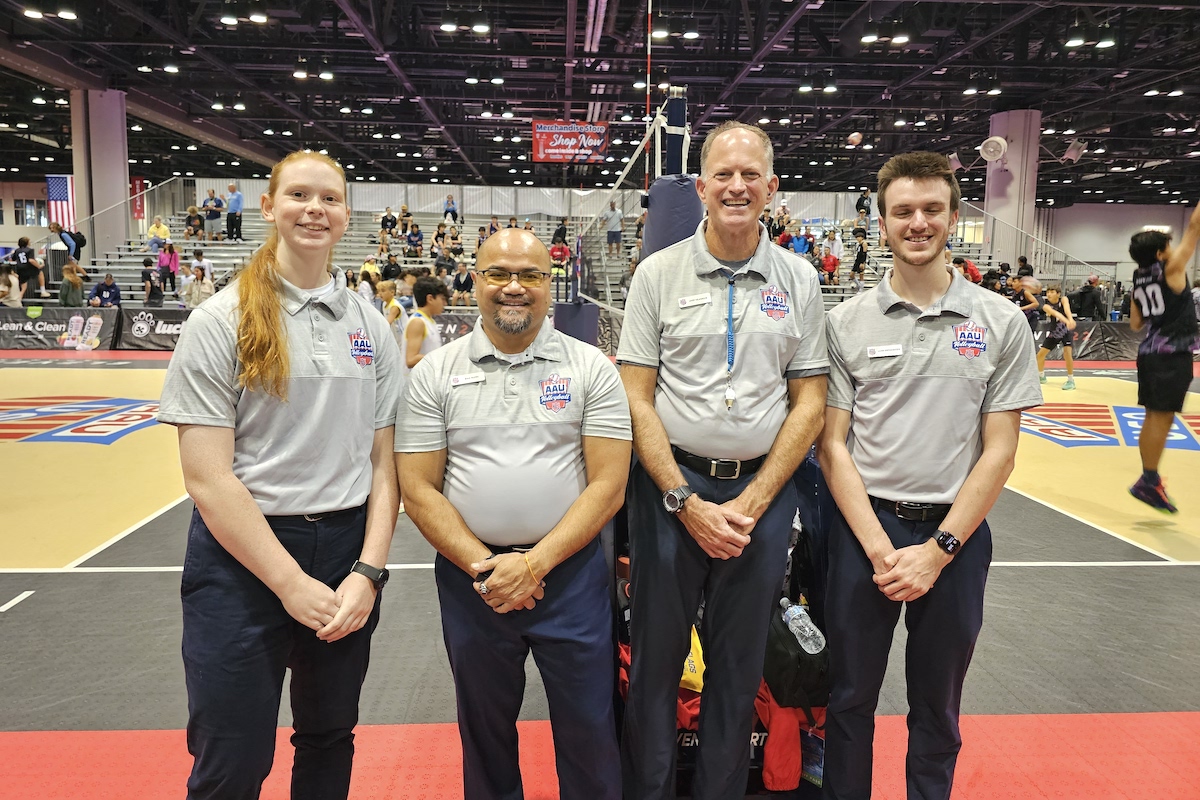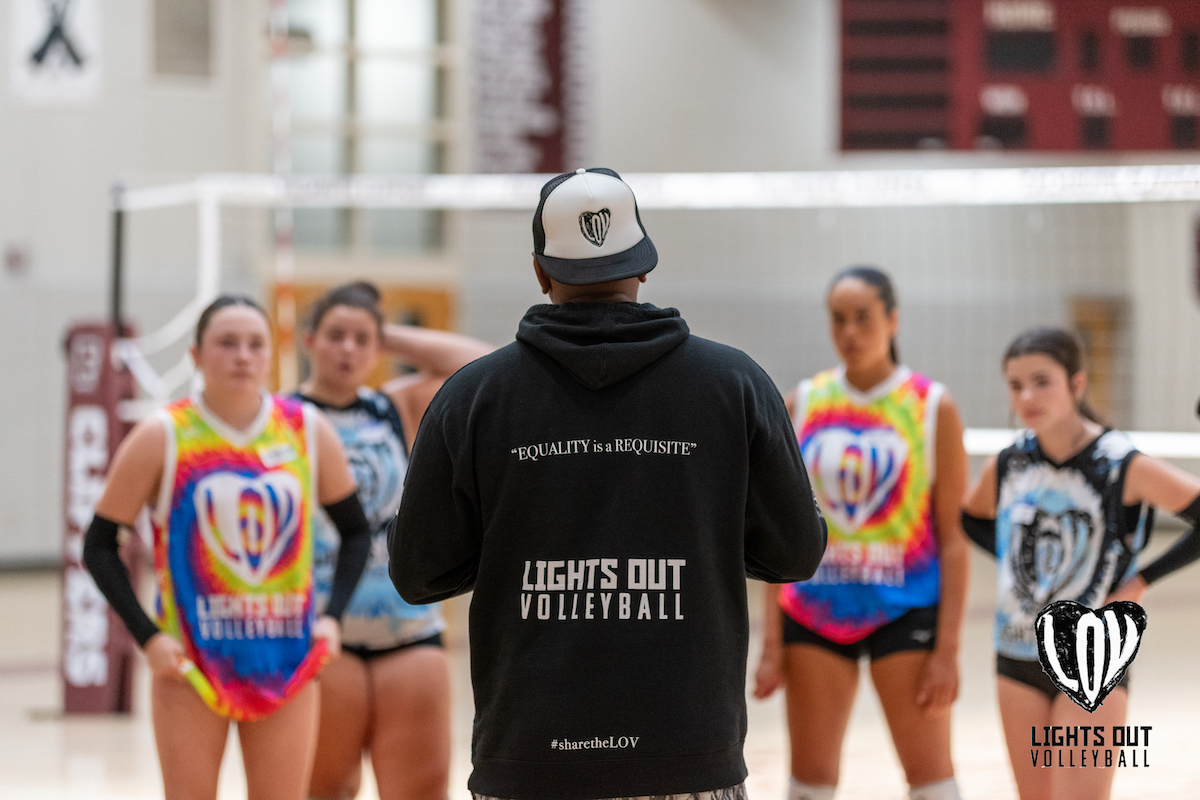When deciding which statistics to track for your volleyball team, the first step is to make sure it is data that can be used to improve your team’s performance. There is no need to spend hours collecting and analyzing data that will not directly benefit how you, the coach, can apply it to your team’s training and game management.
Here are some benchmarks and metrics to help you get started:
Attacking efficiency
Attacking efficiency is best read as a percentage and measures a player’s effectiveness when attacking the ball. It is is calculated by kills minus errors and then divided by the total attempts. It is the likelihood that a point will be scored by an attacker each time they have an attempt. This value may dip below .000 and represent a negative value. In this scenario, the attacker is more likely to make an error than earn a point.
OH1- Must be your highest producing attacker, especially in the two hitter phases. Their Kills/Set is more important than their attacking efficiency.
- .250 or Greater
- 4 Kills/Set
OH2- This is typically a more ball control focused left side attacker. Hitting efficiency is less important given that they spend most rotations in the three hitter phase.
- .195 or Greater
- 2.5 Kills/Set
M1- Efficiency is usually lower than the M2 due to an increase of attempts and being the in the two hitter phase for two rotation if you are running a 5-1 offense.
- .350 or Greater
- 2.5 Kills/Set
M2- Efficiency can be higher in the M2 because they are in the three hitter phase with a more balanced offense if you are running a 5-1. Kills per set are less than the M1 due to the balance of the offense.
- .390 or Greater
- 1.5 Kills/Set
OPP- This is a great position to place high efficiency and high output attackers. They have the balance of the offense for all three rotations and can match up against weak left front blockers. Teams at a high level will run a large amount of the offense through this position.
- .325 or Greater
- 3 Kills/Set
Setter- Setters need to think of themselves as a part of the offense, not just a component. They can help keep defenses off balance and earn secondary kills for attacker by holding front and back row players honest.
- .450 or Greater
- 1 Kill/Set
Kill Percentage
Kills / Attempts – This metric is often over looked or not understood. Fuller believes it is one of the most valuable measurements for the potency of an offense. It is best understood as a percentage and cannot go below .000 because it does not include errors. Kill Percentage measures the attackers offensive ceiling and efficiency measures where they are actually at. For example, an attacker with a Kill Percentage of .400 (40%) and an Efficiency of .150 (15%) means the attacker is taking aggressive swings, but making errors (for one reason or another). They have a gap value of 25%. On the other hand, an attacker with a Kill Percentage of .200 (20%) and an Efficiency of .150 means the attacker is attacking close to their ceiling. They have a gap value of 5%. Having a high Kill Percentage is important if you want your team to earn points.
Serving Efficiency
Serving is a critical skill to train, develop and track if you are focusing on developing your team’s performance. The location, speed, and consistency of a serve can disrupt your opponent’s offense and get them out of system, which helps your team’s defense. One of the 3 metrics that Munciana Co-Director and 18 Samurai Coach Mike Lingenfelter tracks during competition are Runs of Points that his team scores in each rotation. He considers three points or more to be a run of points. Within the first few tournaments you will be able to determine which of your rotations are stronger or weaker, based on this metric, and respond by adjusting your line-up or focusing on certain rotations more in practice. Lingenfelter applies several competitive drills such as Momentum Wash Drill and Biggie Smalls Wash Drill to his team’s training.
Serving Percentage measures the player’s success in serving the ball into play. It is calculated by serves minus errors, then divided by the total attempts. Mintonette Sports Club Director and Head Coach Max Miller consistently tracks serving percentage and the average number of times per rotation each player serves. Every once in a while, h will get the speed radar gun out during practice to also focus on aggressive serving.
Although you want your team’s serving percentage to be high to limit errors, it is also important for athletes to have a purpose/goal every time they step behind the line, not just get their serve in. Calling a serving zone (1 through 6) for your athletes can help them focus on serving a certain area of the court or a certain passer on the opposing team.
Consider introducing team goals for serving, for example, keep the other team under a certain pass percentage. When deciding which rotation to begin the Set in, coaches can use serving efficiency data to decide who will be the first server.
Sideout Efficiency
The other part of Runs of Points is tracking how well your team stops the opponent from going on runs and scoring several points in a row. Miller tracks points won and lost per rotation while serving and receiving, so he knows which rotations his team is more efficient with earning a sideout (winning the serve reception). Lingenfelter tracks “1 and dones” when his team earns a sideout on the first try.
Pass Quality Rating
A big component to sideout efficiency is the quality of the first contact. Typically passing is rated on a scale of 0 to 3, with 0 being a service reception error and 3 being a perfect pass to the setter at the net.
After ten years of Solo Stats usage, Virginia Elite aggregated all of their data and found that serve receive error is one of the greatest triggers to set / match loss. Technical Director Joseph Ziegler said “we crunched the numbers and found we can have a better point win percentage with a 1.65 pass rating and a sub 10% pass error percentage, as compared to a 2.00 pass rating and a higher than 10% pass error.” This is all based on service and attack efficiency remaining constant.
If you would like to find a new challenge for your team, you can track what Lingenfelter calls “Red Zone Activity,” which is how your team or the opponent responds once either team scores 20 points. This can show how well your team can close out a Set if you reach 20 points first. It can also show how well your team responds to pressure if you are down in the last part of the Set and then able to come back and win.
Volleyball statistics aren’t the only deciding factor. You also have to weigh the competition level, team chemistry, and work ethic. As a coach, you have to continually find new ways to help your team perform better.
Additional volleyball coaching education including game management, practice planning, culture and technology.
This article is a collaboration with several JVA member clubs: KIVA, Munciana Volleyball, The Academy Volleyball Club, Mintonette Sports, Virginia Elite, and Tim Frechette, the Founder and Editor of Athletic Lift, an educational resource website to help coaches, players, and even parents learn various drills to run, best equipment to buy, and commonly asked questions that are asked about different sports.










